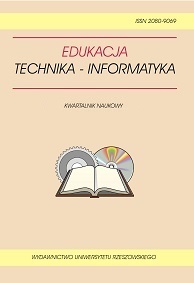Mapping and Visualization of a Research Network: Case Study
DOI:
https://doi.org/10.15584/eti.2018.1.44Keywords:
networking, bibliographic and bibliometric data, mapping, visualization, applicationsAbstract
The article focuses on trends and methods as well as tools used for mapping and visualization of scientific domains as a research methodology which is attracting more and more interest from scientific information and science studies professionals; several factors which have contributed to such developments are also discussed. Science mapping or bibliometric mapping is a spatial repre-sentation of how disciplines, fields, specialties, and individual documents or authors are related to one another (Small, 1999). Different approaches have been developed to extract networks using the selected units of analysis (authors, documents, journals, terms, etc.). Furthermore, the authors looks at the most popular computer programs used for the processing of bibliographic and biblio-metric data.. In addition, plans and activities are presented concerning a comprehensive analysis of IRNet project (www.irnet.us.edu.pl) networking activities and numerous publications, using spe-cial ICT tools and study methods, first of all Pajek and presenting a several examples.Downloads
Published
2018-03-30
How to Cite
SMYRNOVA-TRYBULSKA, E., MORZE, N., & KUZMINSKA, O. (2018). Mapping and Visualization of a Research Network: Case Study. Journal of Education, Technology and Computer Science, 23(1), 327–332. https://doi.org/10.15584/eti.2018.1.44
Issue
Section
PROBLEMS OF HIGHER EDUCATION INSTITUTION DIDACTICS
License
Copyright (c) 2018 Journal of Education, Technology and Computer Science

This work is licensed under a Creative Commons Attribution-ShareAlike 4.0 International License.

